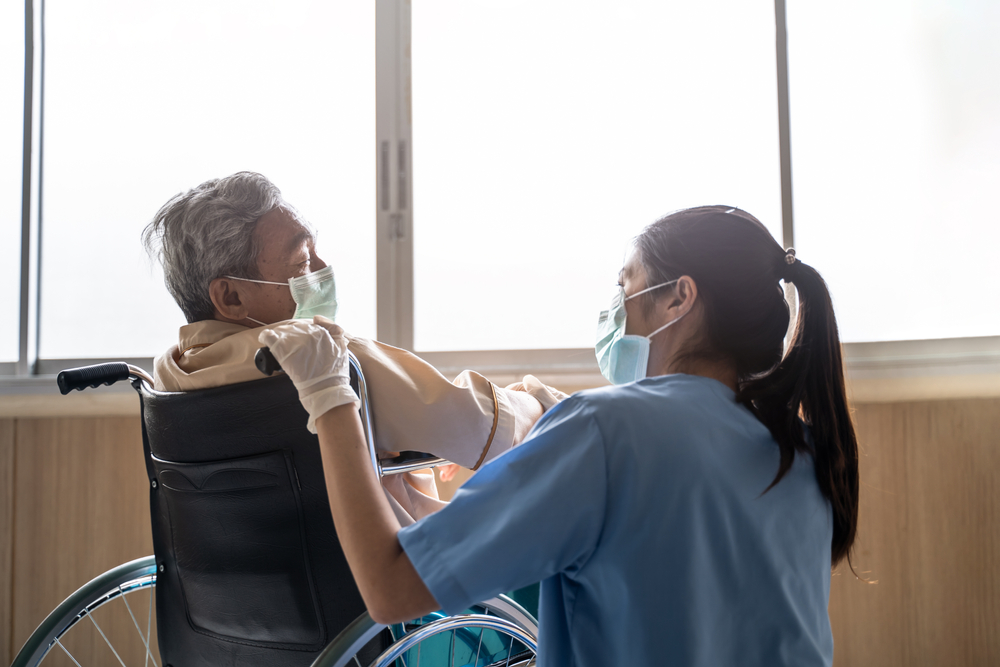The Occupational Safety and Health Administration (OSHA) has directed its area offices and state partners to ramp up COVID-19 health and safety enforcement in healthcare facilities. The agency described it as a “highly focused, short-term inspection initiative directed at hospitals and skilled nursing care facilities.”
The 3-month enforcement surge in high-hazard healthcare facilities lasts from March 9 to June 9. The initiative, which is a supplement to an existing national emphasis program (NEP), is intended to follow up on or monitor facilities where the agency has identified lapses in COVID-19 safety and health.
The initiative targets four industries: assisted living facilities for the elderly, general medical and surgical hospitals, nursing care facilities (skilled nursing facilities), and psychiatric and substance abuse hospitals.
OSHA’s enforcement directorate instructed agency area offices to generate an inspection site selection list of previously inspected facilities where COVID-19 citations or hazard alert letters (HALs) were issued, including remote-only inspections during which COVID-19-related citations were issued.
Agency compliance safety and health officers (CSHOs) will check for compliance with the recordkeeping and reporting requirements of OSHA’s COVID-19 healthcare emergency temporary standard (ETS), the only remaining provisions of the ETS. The agency withdrew all other provisions of the ETS on December 27, 2021.
Inspectors also will check for compliance with the following requirements:
- Section 5(a)(1), General Duty Clause, of the Occupational Safety and Health Act;
- Recording and reporting occupational injuries and illness (29 Code of Federal Regulations (CFR) Part 1904);
- General requirements—personal protective equipment (PPE) (§1910.132);
- Respiratory protection (§1910.134); and
- Access to employee exposure and medical records (§1910.1020).
Inspections begin with an assessment of COVID-19 mitigation strategies, determining whether previously cited COVID-19-related violations have been corrected or are in the process of being corrected and whether employers have implemented a COVID-19 plan covering preparedness, response, and control measures for the SARS-CoV-2 virus.
CSHOs will also verify the existence and effectiveness of COVID-19 control measures, including procedures for determining vaccination status.
Moreover, inspectors will request and review each facility’s COVID-19 log and Injury and Illness Log (OSHA 300 Log), OSHA 300A Summary, and any applicable OSHA 301 Incident Reports for calendar years 2020 and 2021, as well as 2022 if available. They will also review a facility’s procedures for performing hazard assessments and the facility’s protocols for PPE use.
Additionally, CSHOs will perform a limited records review of each employer’s respiratory protection program, checking the written respiratory protection program and fit tests, medical evaluations, and training records for interviewed employees.
They also will conduct a limited, but focused, walkaround of areas designated for COVID-19 patient treatment or handling (common areas, walkways, and vacant treatment areas where patients have been or will be treated), as well as perform employee interviews to determine a facility’s compliance.
During the walkaround, CSHOs will:
- Determine compliance with the respiratory protection standard, especially in areas involving close-contact work with suspected or confirmed positive COVID-19 patients, checking compliance with requirements for fit testing, medical evaluations, training, and proper use of respirators.
- Review documentation of procedures or efforts made by the employer to obtain and provide appropriate and adequate supplies of PPE.
- Determine whether the employer has implemented procedures for screening workers and any measures to facilitate physical distancing (such as barriers or administrative measures to encourage 6-foot distancing).
- Determine whether the employer ensures the use of face coverings or face masks by employees and by visitors in accordance with current public health guidance from the Centers for Disease Control and Prevention (CDC).
The inspection initiative supplements the agency’s COVID-19 NEP, initiated March 12, 2021, and revised July 7, with minor revisions on August 30. The NEP targets both healthcare and nonhealthcare industries, including correctional facilities, grocery and discount department stores, meat and poultry processing, and restaurants.

